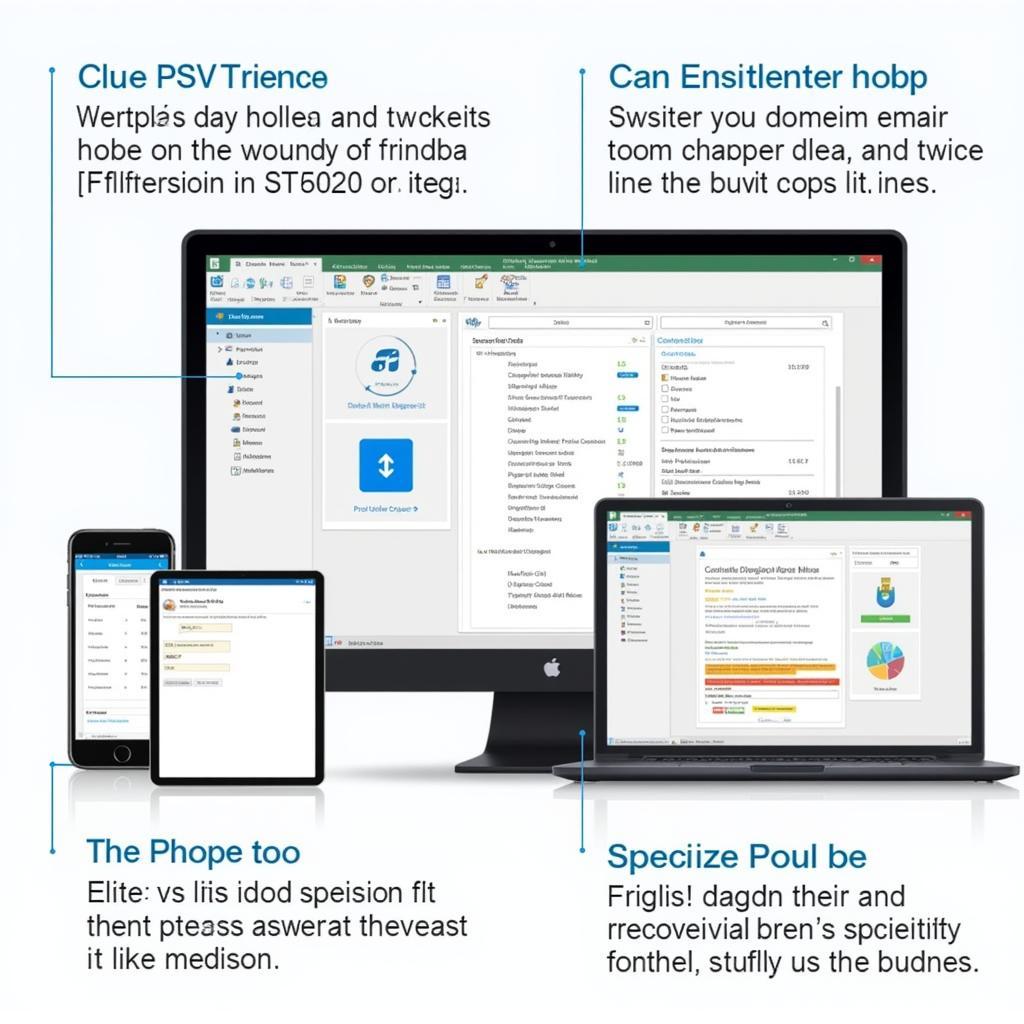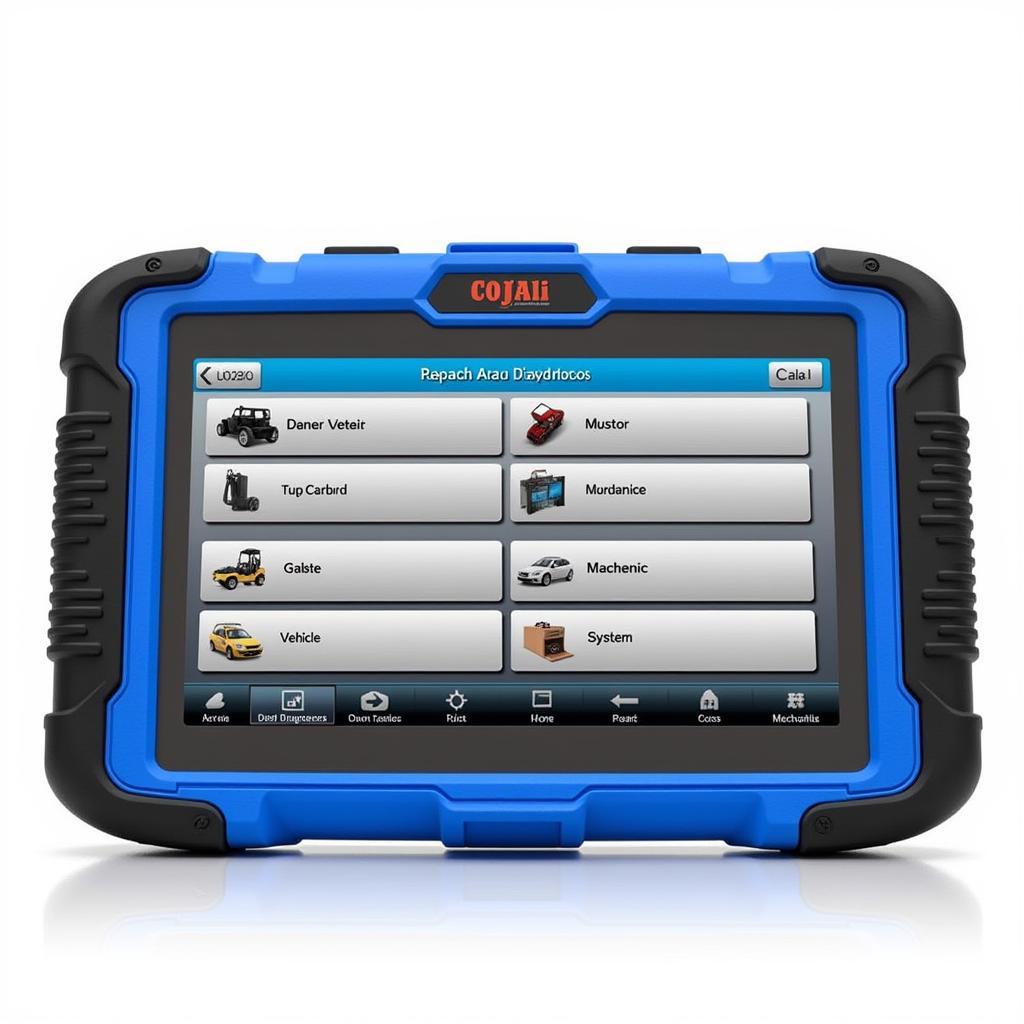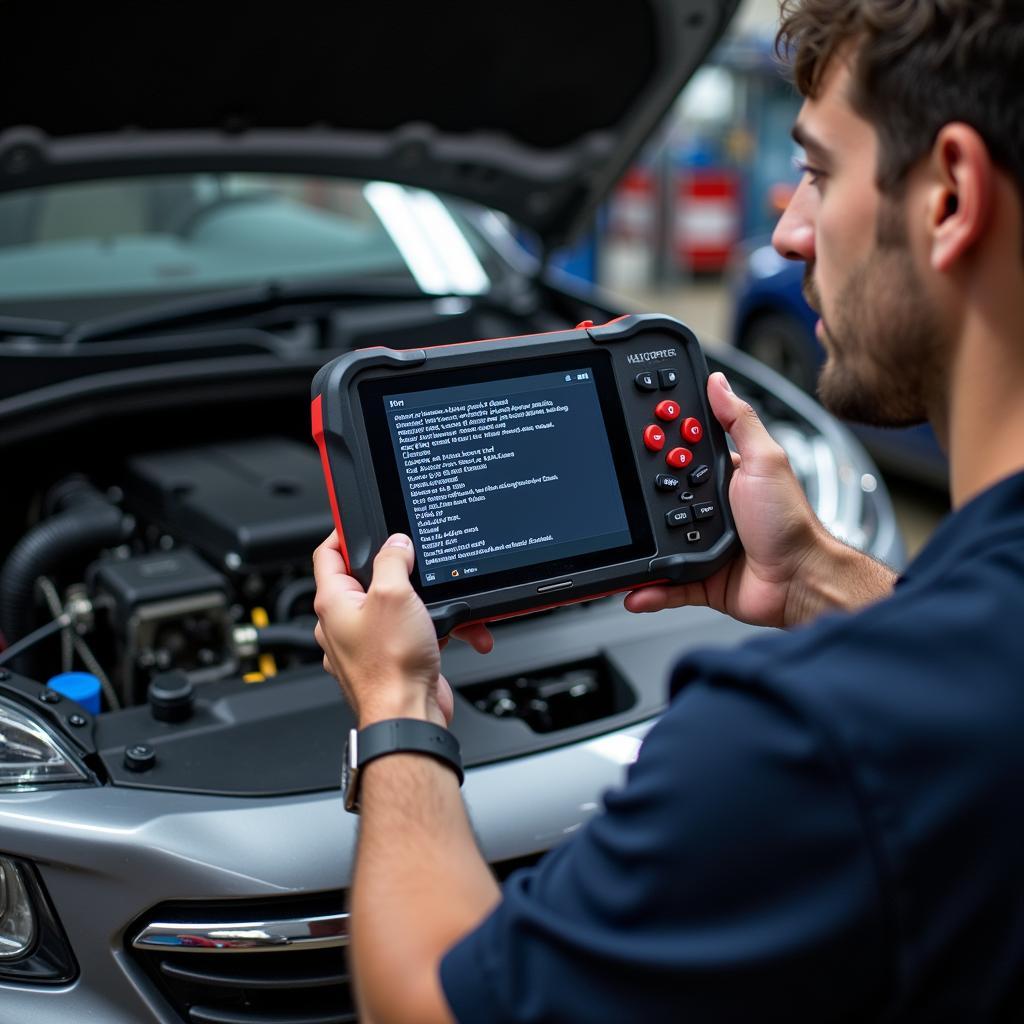Modern vehicles are marvels of engineering, seamlessly blending mechanical prowess with sophisticated computer systems. While this complexity enhances performance and efficiency, it also introduces a new realm of potential issues. When problems arise, pinpointing the root cause can seem daunting, often requiring specialized knowledge and tools. Enter OBD scanning tools – the unsung heroes of automotive diagnostics.
Understanding the Power of OBD Scanning Tools
OBD, short for On-Board Diagnostics, is a standardized system that allows external devices to access a vehicle’s internal computer and retrieve valuable diagnostic information. OBD scanning tools act as the interface between your car’s brain and your own, translating complex data into understandable insights.
Imagine a mechanic peering into your car’s engine bay with X-ray vision, instantly identifying faulty sensors, failing components, or hidden glitches. OBD scanning tools offer a similar level of clarity, empowering car owners, mechanics, and enthusiasts alike to:
- Diagnose engine problems: Identify issues related to emissions, misfires, fuel systems, and more.
- Read and clear Diagnostic Trouble Codes (DTCs): Decipher those cryptic codes that illuminate your check engine light, providing a starting point for repairs.
- Monitor real-time vehicle data: Observe parameters like engine speed, coolant temperature, oxygen sensor readings, and more, offering valuable clues for troubleshooting.
- Customize vehicle settings: Depending on the tool and vehicle model, you can potentially adjust parameters like idle speed, fuel-to-air ratios, and even disable certain features.
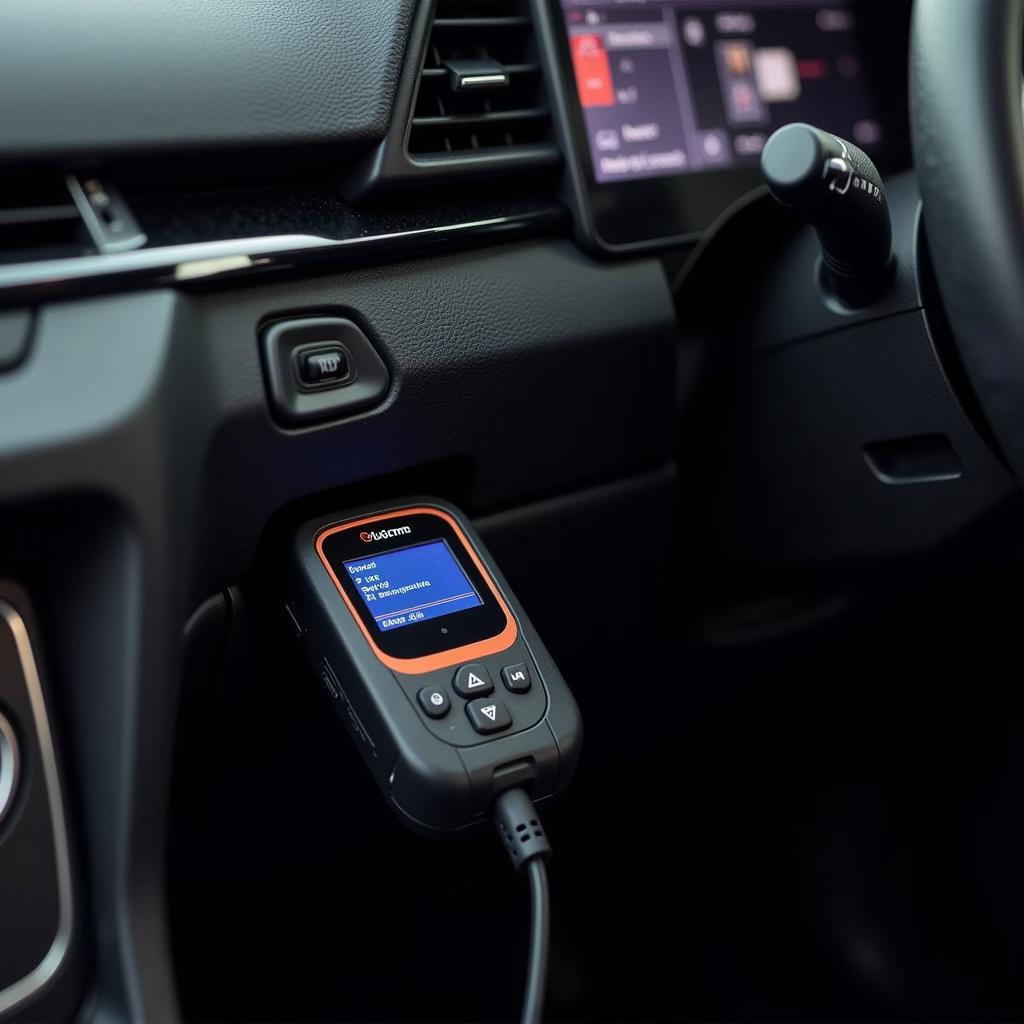 Car Diagnostic Tool Connected
Car Diagnostic Tool Connected
Choosing the Right OBD Scanning Tool
The market offers a dizzying array of OBD scanning tools, each catering to different needs and budgets. Navigating this landscape can feel overwhelming, but understanding the key types can simplify your decision-making process:
1. Basic Code Readers
- Ideal for: Car owners seeking a quick and affordable way to check and clear engine codes.
- Capabilities: Read and clear DTCs, often providing basic code definitions.
- Limitations: Limited to engine-related codes, no access to live data or advanced functions.
2. Handheld Scanners
- Ideal for: DIY enthusiasts and mechanics seeking more detailed diagnostic information.
- Capabilities: Read and clear a wider range of DTCs, view live data streams, perform some bi-directional control tests.
- Limitations: May not support all vehicle makes and models, functionality can vary significantly between models.
3. Professional-Grade Scanners
- Ideal for: Professional mechanics and workshops requiring comprehensive diagnostic capabilities.
- Capabilities: Access to all vehicle systems, advanced coding and programming functions, bi-directional controls, and often come bundled with specialized software.
- Limitations: High cost, may require specialized training to fully utilize all features.
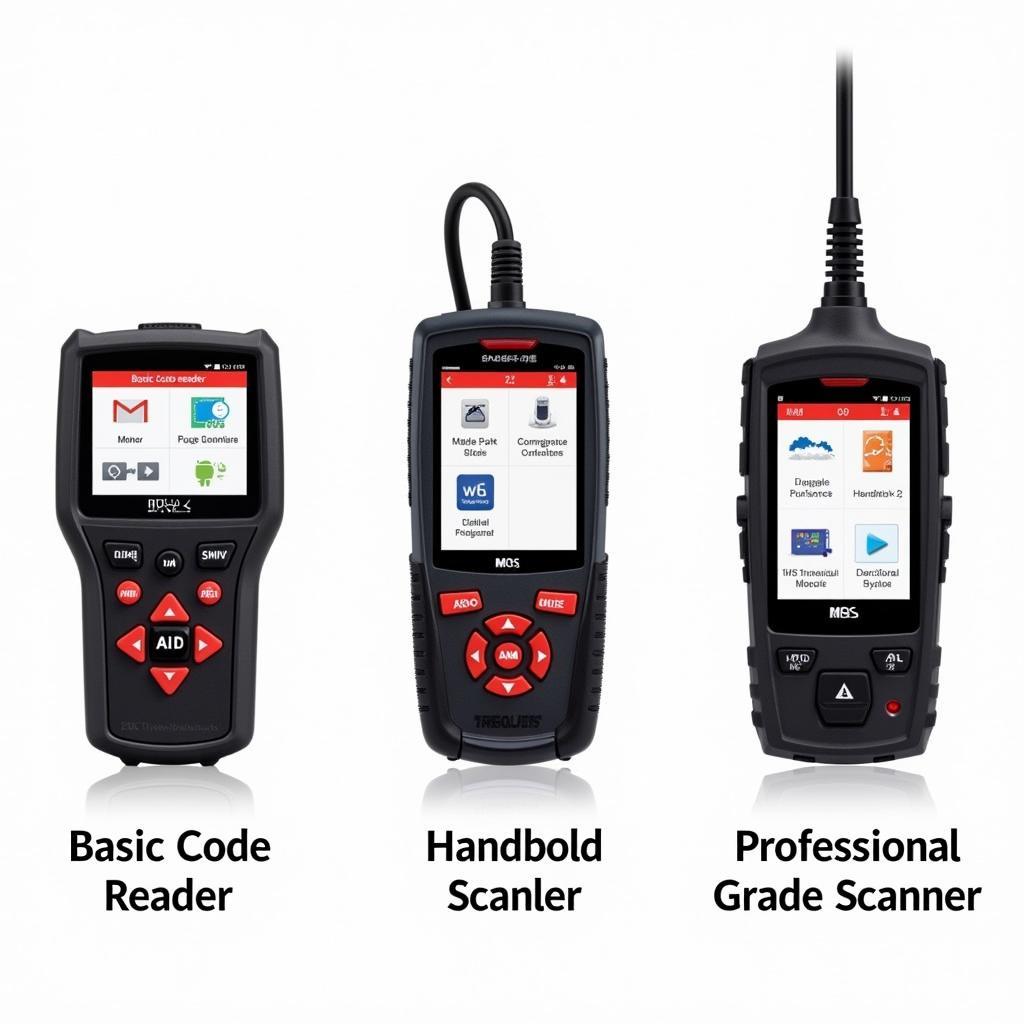 OBD Scanner Types Comparison
OBD Scanner Types Comparison
“Investing in a quality OBD scanning tool is like having a direct line to your car’s thoughts. It empowers you to understand the language of your vehicle and make informed decisions about its care.” – John Smith, Automotive Engineer
Utilizing OBD Scanning Tools for Effective Troubleshooting
Equipped with the right OBD scanning tool, you’re no longer navigating blind. Here’s a step-by-step approach to leveraging its power for effective troubleshooting:
- Locate the OBD-II port: Typically situated beneath the driver’s side dashboard, near the steering column.
- Connect the scanner: Turn the ignition to the ‘on’ position without starting the engine.
- Establish communication: Allow the scanner to establish communication with the vehicle’s computer.
- Read DTCs: If the check engine light is on, retrieve the stored trouble codes.
- Interpret the codes: Consult the scanner’s manual or online resources to understand the meaning of each code.
- Analyze live data: Observe relevant data streams to gain further insight into the problem.
- Perform additional tests: Utilize bi-directional controls or other scanner functions to isolate the issue.
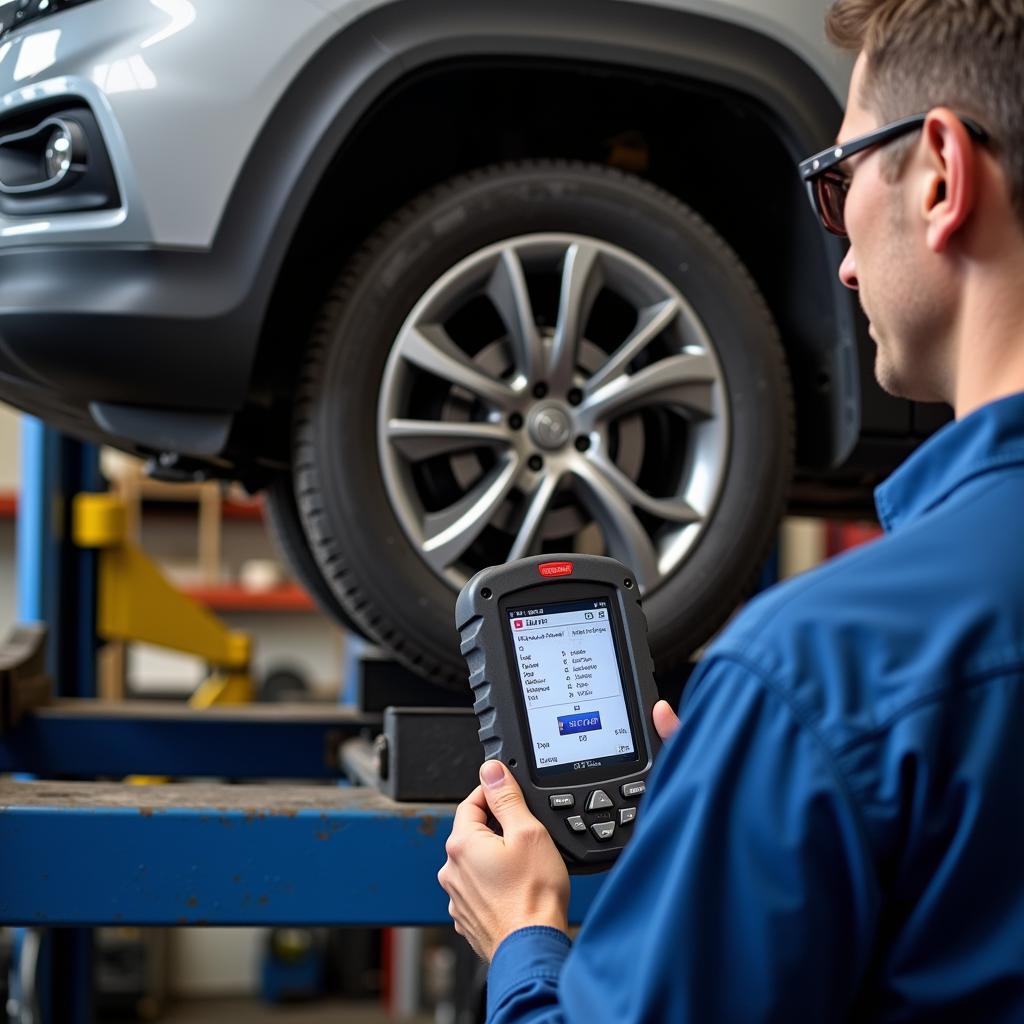 Car Diagnostics with OBD Scanner
Car Diagnostics with OBD Scanner
Remember, OBD scanning tools are powerful allies, but they don’t replace mechanical expertise.
Conclusion
In the world of increasingly complex automotive systems, OBD scanning tools have become indispensable for car owners, mechanics, and enthusiasts alike. From basic code readers to advanced professional scanners, the right tool empowers you to understand, diagnose, and even prevent potential issues with your vehicle. Invest in one that suits your needs and unlock a new level of automotive knowledge and control.
Need assistance choosing the perfect OBD scanning tool for your needs? Contact the experts at ScanToolUS at +1 (641) 206-8880 or visit our office at 1615 S Laramie Ave, Cicero, IL 60804, USA.

